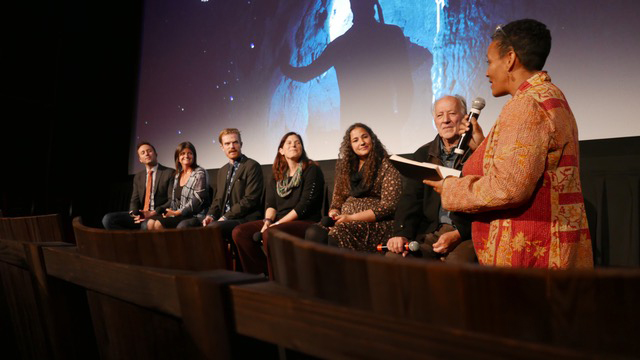How did life begin? What is dark matter? What is consciousness? How much do we really know? These essential questions have fueled scientific inquiry for generations.
Dr. Rachel Smith, Adjunct Professor at UNC, Associate Professor at Appalachian State, Head of the Astronomy and Astrophysics Research Lab, and Curator of Meteorites at the NC Museum of Natural Sciences is one of nine scientists looking for answers to these big questions in “The Most Unknown,” a new feature-length documentary from VICE Media’s science and technology channel, Motherboard.
Beginning deep underground in the Frasassi Caves in Italy, the film follows nine scientists around the globe as they explore new fields and visit new places. The scientists met with each other to discuss their work and how their respective fields may overlap.

Smith met with Dr. Luke McKay, a postdoctoral research fellow at Montana State University who studies primitive microbial processes in Yellowstone National Park, and Dr. Victoria Orphan, the James Irvine Professor of Environmental Science and Geobiology at the California Institute of Technology (Caltech). McKay joined Smith on an observation trip to the W.M. Keck Observatory, which is located atop Mauna Kea on the Big Island of Hawaii. Smith then went to Costa Rica to accompany Orphan in research involving methane seeps using a deep-submergence vehicle named Alvin.
Dr. Smith is an observational astronomer interested in answering fundamental questions about how our solar system and other planetary systems form and evolve over time. Dr. Smith uses the largest ground-based optical-infrared telescopes, including the 10-meter Keck Telescope on Mauna Kea in Hawaii, to investigate detailed chemistry hidden in the gas surrounding forming stars across the Galaxy. She uses high-resolution spectroscopic techniques on the Keck II telescope to determine precise abundances in the isotopes of carbon and oxygen in carbon monoxide gas (CO, the same molecule in car exhaust). This gas is plentiful surrounding forming stars (often called young stellar objects, or protostars) that are analogues to our proto-Sun roughly 4.56 billion years ago. Data from these observations can be compared to meteorites and the Sun — together, the oldest material we have from the early solar system — in order to understand the early chemical pathways fundamental toward building planets and eventually, life. Dr. Smith is currently analyzing data from protostars much more massive than the Sun in order to learn more about how star and planet formation may vary in different environments across the Galaxy.

